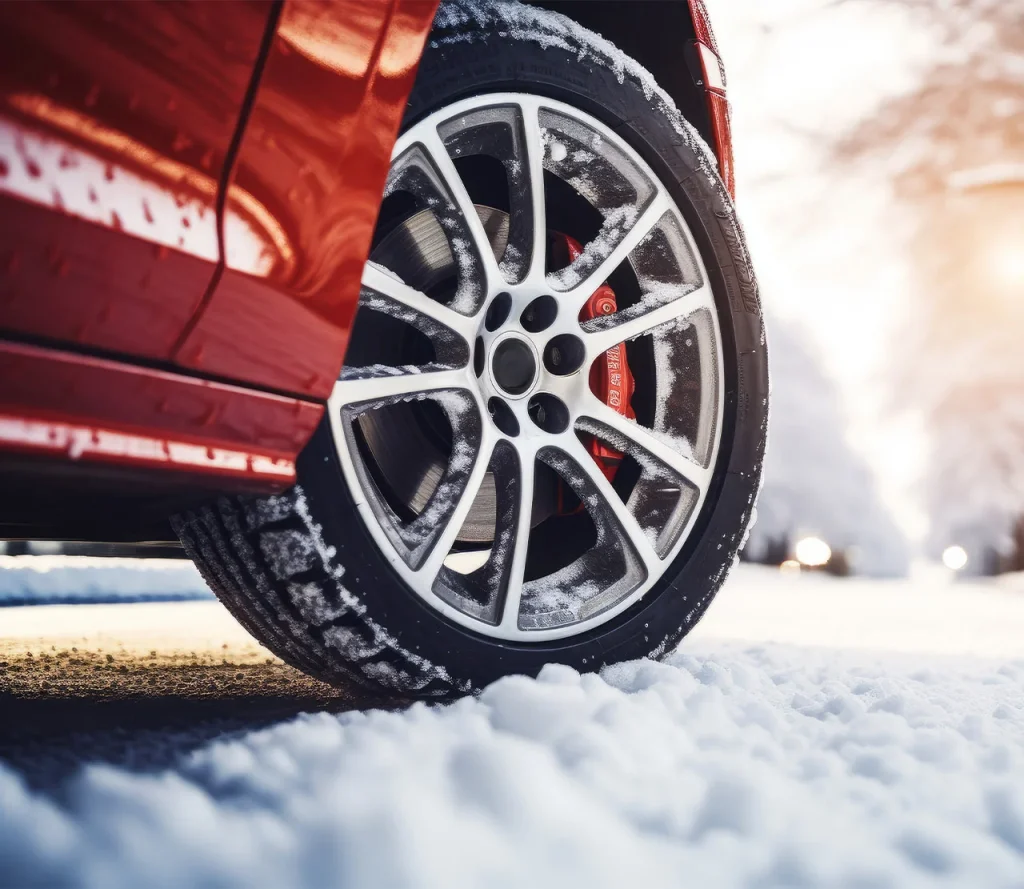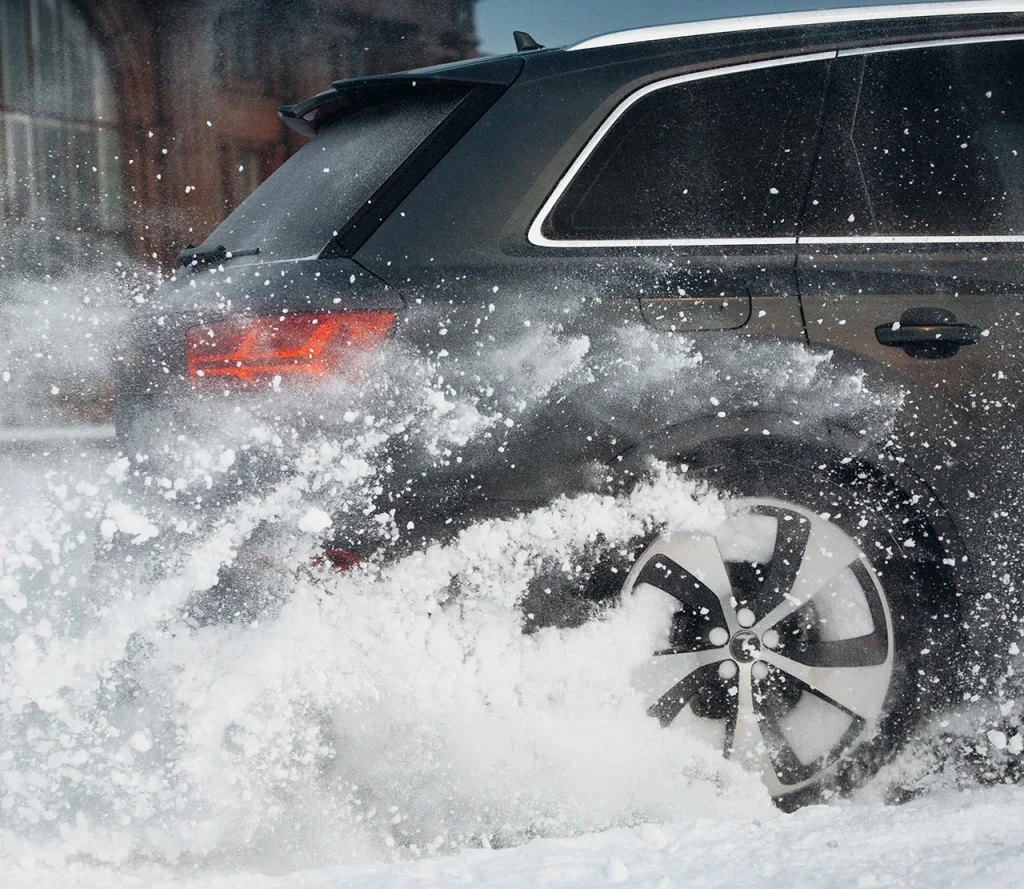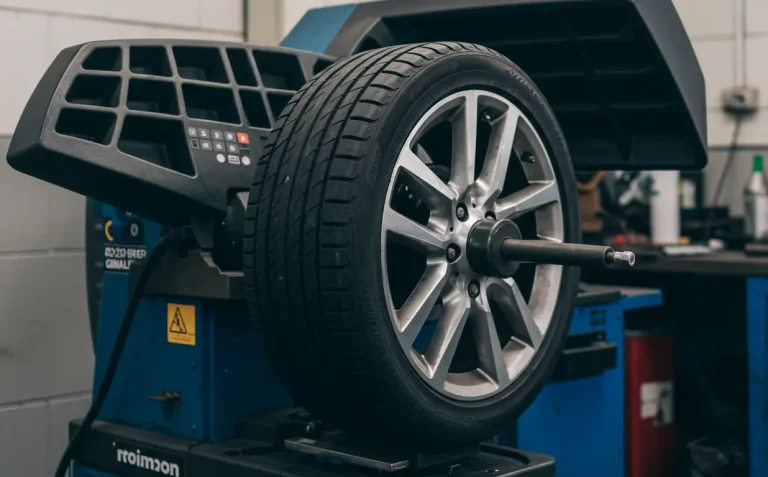Winter Tire Myths Debunked
Are you ever wondering why it’s so important to choose the right tire for your vehicle? It’s crucial for driving safety, performance, and, of course, fuel efficiency. There’re a few things you need to consider when buying new tires, including tire type, driving conditions, vehicle specifications, and regular maintenance.
What about the season? The season is one of the most important factors to consider when purchasing new tires. You might be wondering why. If you live in an area with harsh winter conditions and you choose all season tires, you may think you’re covered for this particular season. However, here’s the catch: all season tires cannot be driven safely on icy roads or in freezing winter conditions.
In this blog post, we’ll explore the myths surrounding winter tires and help you choose the right tire for your needs.

Do We Really Need Winter Tires?
The answer to this question depends on the weather conditions in the region where you live and drive. In areas with frequent snow and ice, winter tires are more than recommended for safe performance. But, if you live in an area with light winter conditions, an all season or an all weather tire can be fine.
Winter tires are often preferred because they offer improved traction and better grip on icy, snowy, and slushy surfaces. They feature an optimized tread pattern and a softer rubber compound that remains pliable in freezing temperatures. At the same time, thanks to the multiple siping details, they enhance the braking and cornering capabilities. Winter tires also provide good control in winter conditions, which minimizes the risk of sliding, skidding, or losing control of the vehicle.
Winter tires are desirable for areas with regular snowfall. If you live in a region with constant snowfall or icy conditions, winter tires are the best option. These tires also come with a lot of benefits when the temperature drops below 45°F, because the rubber stays pliable in these situations, increasing the tire’s grip. Also, if you’re driving in mountains or hilly areas, winter tires are mandatory to keep continuous forward motion.

Winter Tires = Snow Tires
Snow and winter tires are the same thing. They’re designed with a special rubber compound and a tread pattern that provides superb traction in cold, snowy, and icy conditions. All these tires are marked with the 3PMSF symbol on their sidewall, which means that they’re certified winter tires.
Snow tires should be called winter tires because when temperatures fall below 45°F, the rubber compound remains flexible in cold temperatures, providing superior traction, which means that the tire can easily perform on snow- and ice-covered roads and in freezing temperatures, providing great control. On the other hand, winter tires have a special tread pattern that increases the number of biting edges, ensuring excellent traction in these challenging conditions.
All Season Tires Are Good Enough
All season tires can be a good option for light winter conditions and cold temperatures, but they aren’t ideal for all winter conditions, because they aren’t as effective as dedicated winter tires, which are designed to handle harsh winter weather.
All season tires have a generic tread pattern that’s perfect for both summer and light winter conditions, while winter tires have a specialized tread pattern that’s designed to grip ice- and snow-covered surfaces. Moreover, all season compounds can stiffen up in the cold, which reduces the tire’s gripping ability, while winter compounds stay flexible even in freezing temperatures.
Year-round tires have an optimized tread pattern with fewer siping details than winter tires. These sipes act as biting edges for better traction on ice- and snow-covered roads. All season tires ensure balanced performance in various conditions, but they sacrifice some winter capabilities to achieve this balance.
Money, Money, Money
It’s a common misconception that winter tires are more expensive than all season tires. While winter tires often come with specialized features that can lead to a higher upfront cost, the reality is different. The initial purchase price of a good quality set of winter tires typically ranges from $400 to $900, whereas all season tires generally cost between $400 and $800. This means the prices overlap when comparing similar quality levels.
Additionally, when it comes to longevity, winter tires are specifically designed for cold temperatures and are made from a softer rubber compound, which can cause them to wear out faster. However, alternating between winter tires and all season tires can help lengthen the lifespan of both sets.
Seasonal installation of winter tires includes extra costs for mounting and balancing twice a year, while all season tires don’t require seasonal changes.
In terms of long-term cost comparison, using a dedicated set of winter tires alongside all season tires can be more cost-effective over time. This reduces wear and tear on both sets and extends their lifespan, leading to less frequent replacements. Furthermore, investing in winter tires can prevent accidents in unsafe winter driving conditions, ultimately saving you money on potential repair expenses and insurance.
Behavior During Wet Weather?
Winter tires are now designed to perform well even in wet weather. Their tread patterns feature multiple grooves that effectively prevent hydroplaning by dispersing water and slush from the tire’s footprint in wet conditions. Additionally, the winter rubber compound remains pliable in cold temperatures, ensuring good traction even in wet weather.
However, there’re some situations where winter tires may not be ideal for wet conditions. For example, the winter compound does not perform as well in warmer temperatures, which can lead to a loss of grip in wet conditions. Furthermore, some specific models are designed to prioritize performance on ice and snow rather than wet surfaces, while others aim to balance performance across all these conditions.
Born To Be Wild
Winter tires provide better traction on ice- and snow-covered roads compared to all season tires, but it’s important to remember that they’re not a guarantee against accidents. Overconfidence or neglecting safe driving practices while using winter tires can easily lead to dangerous situations.
While winter tires are designed for cold temperatures, snow, and ice, they aren’t infallible. They can still slide or slip under extremely harsh conditions. Although their tread pattern and rubber compound improve safety, there’s still a risk of losing control.
To drive safely with winter tires, it’s essential to adjust your driving to suit the existing conditions. Even with winter tires, maintaining normal speeds on icy and snowy roads can be risky, and you may still slide if you aren’t cautious. Additionally, avoid underinflating your tires during winter driving since proper tire inflation is needed for effective grip on snow and ice.
In summary, while winter tires enhance safety, you must adapt your driving habits to the road conditions in which you’re driving. The best practices include reducing your speed, increasing your following distance, avoiding sudden movements, and regularly checking your tire pressure for optimal winter performance.
Conclusion
Winter tires are the best option if you live in an area with harsh winter conditions or regular snowfall. They’re designed with a special tread and rubber compound that ensures continuous forward motion on ice- and snow-covered roads. Winter tires perform significantly better than all season tires in winter weather.
Contrary to common belief, winter tires don’t cost much more than all season tires. This myth about their expense overlooks the substantial safety and performance benefits they provide, helping you maintain control and avoid accidents during the winter months. Overall, if you live in an area with frequent snowfall, it’s much safer to have winter tires.






